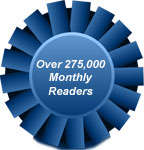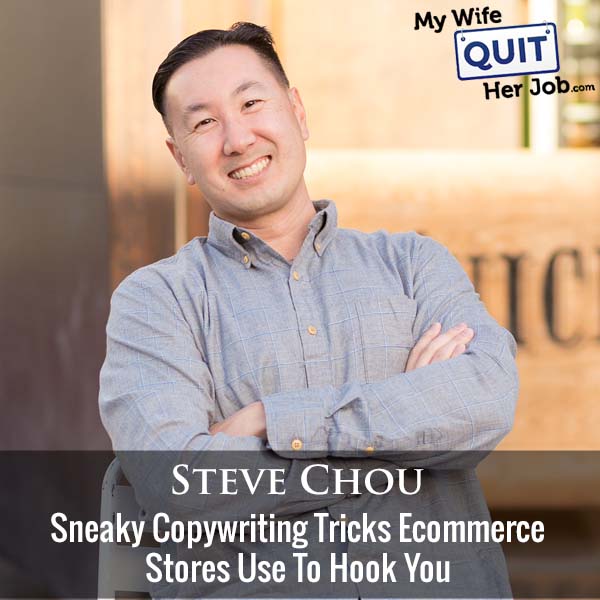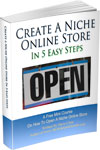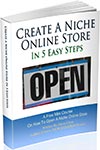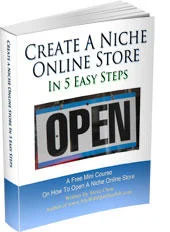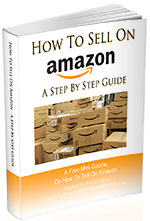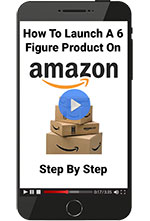Podcast: Download (Duration: 11:56 — 13.9MB)
Welcome to Family First Fridays, a special segment of the podcast where I publish solo episodes to teach you how to make money without sacrificing your lifestyle.
If you haven’t picked up my Wall Street Journal bestselling book, The Family First Entrepreneur, head on over to https://thefamilyfirstentrepreneur.com and fill out the form to get over $690 in free bonuses.
In today’s episode I discuss psychological mind games that you can use in your copy that can help you make more money with both your online store and your Amazon business.
Get My Free Mini Course On How To Start A Successful Ecommerce Store
If you are interested in starting an ecommerce business, I put together a comprehensive package of resources that will help you launch your own online store from complete scratch. Be sure to grab it before you leave!
What You’ll Learn
- The art of persuasion
- Psychological hacks that will elevate your sales game
- Copywriting tricks to use in your email campaigns
Other Resources And Books
Transcript
You’re listening to the My Wife, Quitter, Job podcast, where I teach you how to make money online by exploring different tools, strategies, and understand how to leverage human psychology to grow your sales. Welcome to a special segment of the show called Family First Fridays, where I’m going solo to give you my thoughts on how to make money without sacrificing your lifestyle. Now, if you haven’t picked up my Wall Street Journal bestselling book, The Family First Entrepreneur yet, head on over to mywifequitterjob.com slash book and fill out the form to get over $690 in free bonuses.
00:30
Today’s episode is particularly fascinating. We are discussing psychological mind games that you can use in your copy that can help you make more money with both your Shopify store and your Amazon business. We’ll be exploring powerful techniques backed by science to help you establish trust, build rapport, and ultimately influence your prospects to buy from you. So get ready to learn the art of persuasion and the psychological hacks that will elevate your sales game to the next level. Now, before we dive in, if you are interested in learning how to sell online,
00:59
Make sure you sign up for my free 6-day mini course over at mywifequitterjob.com slash free. So this first psychological strategy is called the Zagarnik effect. Now the Zagarnik effect is a psychological phenomenon named after its discoverer, Soviet psychologist, Bluma Zagarnik. And the effect refers to the tendency for people to remember interrupted or incomplete tasks more easily than completed tasks. For example, Zagarnik found.
01:28
that the brain maintains a state of tension or cognitive arousal when something is not complete, which acts as a mental reminder to finish the task. And this tension is only resolved once the task is done. So in a nutshell, Zygernik discovered that humans are bothered by loose ends. Now, have you ever binge watched an entire Netflix series because you just had to find out how it ended? I know I have, and human beings just don’t like to leave things unfinished. So how will it make you money?
01:57
Well, you can use the Zagarnick effect in your emails to entice your customers to open or click on your emails by creating a cliffhanger in your subject line or your email copy. For example, if you use the email subject line, this is the craziest deal we’ve ever offered. This is what will happen in your customer’s mind. Wait, what crazy deals? I have to know what those crazy deals are, and then they’ll open your email. Then in your email body, you can show the customer a crazy discounted deal and then tell them to click here
02:27
to see all the rest of your crazy offers. And this works well because humans need closure and they’re only going to get it by taking the actions that you give them. In other words, you are using psychological mind games to lead them to buy. The next psychological strategy is called the anchoring bias. Now anchoring bias, also known as the anchoring effect, is a cognitive bias that causes people to rely too heavily on the first piece of information they receive, also known as the anchor, when they make their decisions.
02:56
And you can use the anchoring bias to significantly influence how customers perceive the value of your products and the pricing. Now you’ve probably seen this in action many times on Amazon. For example, when you display the original price of a product next to a discounted price, the original price serves as an anchor, making the discounted price seem like a much better deal. And customers are much more likely to perceive the product as a good value because they compare it to the higher original price. Another example,
03:25
is when an e-commerce store displays a high-priced item next to a similar but lower-priced product. The higher-priced item serves as an anchor, making the lower-priced product appear much more affordable and attractive to customers. So how can you leverage this in your email or your marketing copy? All you got to do is talk about something really expensive at first and then present your much less expensive product afterwards. Here’s an example of price anchoring that I saw just the other day when I was shopping for mattresses.
03:55
If you’ve been dreaming of a great night’s sleep on a high-quality mattress, you might think that you need to pay upwards of $10,000 to $15,000. And the reason these mattresses are so expensive is because they are marked up by a bunch of middlemen. At our company, we cut out all the middlemen and sell to you direct at the best prices. Our affordable range of luxury mattresses start at only $2,000 and provide the same level of comfort and support as those expensive big name brands, but without the hefty price tag.
04:24
See what they did here? They got me thinking that mattresses should cost 10 to 15K and then they presented a $2,000 mattress. Incidentally, this is why you should always list your products in your online store from high to low. That way you train them to expect higher pricing and it only gets better as they scroll through your products. Now along the same lines of price anchoring, it also helps to introduce decoy products in your online store. Now there’s a famous magazine,
04:53
that tried to sell both their print and web versions of their content. So they priced the web version at $59 and the web and print version at $125. And when the prices were presented this way, 68 % chose the cheaper web-only version, which made $4,000, and 32 % chose the web and print option, which made another 4K for a grand total of $8,000 in revenue. But then they decided to introduce a decoy product
05:23
that offered the print-only version at $125. So basically they had the web version at $59, a print-only version at $125, and a web and print version at $125. So basically the print and the print and web version with the exact same price. And the upshot of including this decoy product was that only 16 % chose the cheapest $59 plan, and a whopping 84 % chose the web and print version
05:52
and they ended up making 12K. The decoy product anchored the price higher and encouraged people to spend more money. Now this next psychological strategy is simply telling a story and you wouldn’t believe how well this works. Once upon a time when my kids were young, my wife and I went shopping for baby slings. And I distinctly remember that we were in this baby store looking at a dozen different types of slings and it all blended together until the sales clerk started talking about their most expensive sling.
06:23
She told us that this particular sling was designed by a 70-year-old Japanese man who always wanted to have kids but could not due to infertility problems with his wife. So he decided to devote his entire life towards making baby slings and carriers. And then she pointed out specific aspects of the sling where the man had an incredible attention to detail and we fell for it. Now this sling was easily 2X more expensive than any other one on the market, but we ended up buying it because of the story behind the sling.
06:52
And I’m pretty sure every other cheaper sling could have done the job, but we made an emotional purchase. Buying anything is rarely logical, and you have to appeal to a person’s emotions. And storytelling does exactly that. This next psychological tactic you can leverage is something called the bandwagon bias. Now the bandwagon bias, also known as the bandwagon effect, is a psychological phenomenon where people tend to adopt a certain behavior, attitude, or action
07:20
because they see that many other people are doing the same thing. And this bias is driven by the desire to conform to the social norms, fit in with everyone else, and avoid feeling left out or isolated. Now here’s what I’ve discovered after selling hankies for over 15 years. People are like lemmings, and they tend to follow everyone else. So all you have to do in your email copy is something along the lines of…
07:44
Join over 121,000 other shoppers who purchase handkerchiefs instead of disposable tissues to save the environment. Gather testimonials, reviews, shout-outs, and case studies showing other people using and loving your products, and that will entice other people to follow suit. Now, according to Market Tailor, consumers who interact with reviews are 115 % more likely to convert, and the more reviews that you have, the higher your conversion rates. So make sure you mention this in your email or your marketing copy to grow your sales.
08:15
Now this next psychological tactic is even more effective than the other four in this episode, and it’s something called confirmation bias. Now confirmation bias is a cognitive bias that causes people to seek, interpret, and remember information in a way that confirms their pre-existing beliefs or hypotheses. Now this bias often leads to a distortion of evidence or selective focus on information that aligns with one’s existing opinions while ignoring or discounting contradictory evidence.
08:45
So how can you leverage confirmation bias in your email copy? The key to using confirmation bias effectively is to understand your audience and empathize with them. Let them know what you think, let them know how you feel and act like them. For example, we sell wedding handkerchiefs for brides and here’s some copy that leverages confirmation bias. Congratulations on your engagement. This is an incredibly exciting time in your life and we understand how important it is for you to have the perfect wedding that you’ve always dreamed of.
09:14
We also understand how complex planning a wedding can be, and you want to have a lasting keepsake of your special day. So let us take care of your wedding keepsakes for you. We offer a line of wedding handkerchiefs where you can include the bride, groom, and wedding date, or whatever text you want to create a lasting memory of your special day. And these handkerchiefs can then become your something blue as well. Now the more you can relate to your customer in your copy, the more likely that they are going to buy. Here’s another psychological tactic you can employ.
09:43
and it’s called action bias. Action bias is a psychological tendency for people to prefer taking action. And this bias arises from the desire to feel and control, to make progress, or to avoid the discomfort of uncertainty and inaction. People often perceive taking action as a sign of productivity or competence. So how can you leverage this action bias? When asking people to buy from you, make sure you let them know what will happen if they don’t buy
10:12
and this will nudge them towards making a purchase right now. Here’s an example. Are you tired of spending 40 hours a week at a job that you don’t like? And wouldn’t you rather be spending your time with your loved ones or actually doing what you want? Order my book, The Family First Entrepreneur, and learn how to achieve financial freedom right now. And if you order right now, you’ll receive a free three-day workshop on how to get started in e-commerce, a two-day workshop on how to make passive income with content, and my six-week Family First Challenge.
10:40
where I will personally help you find your next side hustle idea. By the way, the example that I presented to you is real. I have a Wall Street Journal bestselling book called The Family First Entrepreneur, and you do in fact get $690 in bonuses for picking it up. Now this final cognitive bias to use in your email and marketing copy is what I call the speak easy effect. The speak easy effect states the words that are easy to say and understand are more trustworthy and valuable. In other words,
11:10
Don’t use big words in your copy. You might think that using SAT words in your emails will make you come across as smart, but it’s secretly having the opposite effect on your sales. And my general rule of thumb is that you should write like a fifth grader. Make your copy and your product simpler and not more complicated and more people will buy from you. And once again, if you found all these psychological strategies and cognitive biases interesting, let me know. Send me an email and maybe I’ll produce another episode just like this one.
11:40
Now that you understand more about human psychology, make sure you listen to my podcast episode on 5 key insights that made me over $17 million. That episode can be found at mywifequitterjob.com slash episode 455.
I Need Your Help
If you enjoyed listening to this podcast, then please support me with a review on Apple Podcasts. It's easy and takes 1 minute! Just click here to head to Apple Podcasts and leave an honest rating and review of the podcast. Every review helps!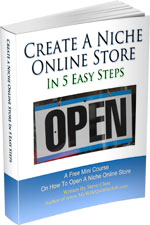
Ready To Get Serious About Starting An Online Business?
If you are really considering starting your own online business, then you have to check out my free mini course on How To Create A Niche Online Store In 5 Easy Steps.
In this 6 day mini course, I reveal the steps that my wife and I took to earn 100 thousand dollars in the span of just a year. Best of all, it's absolutely free!

